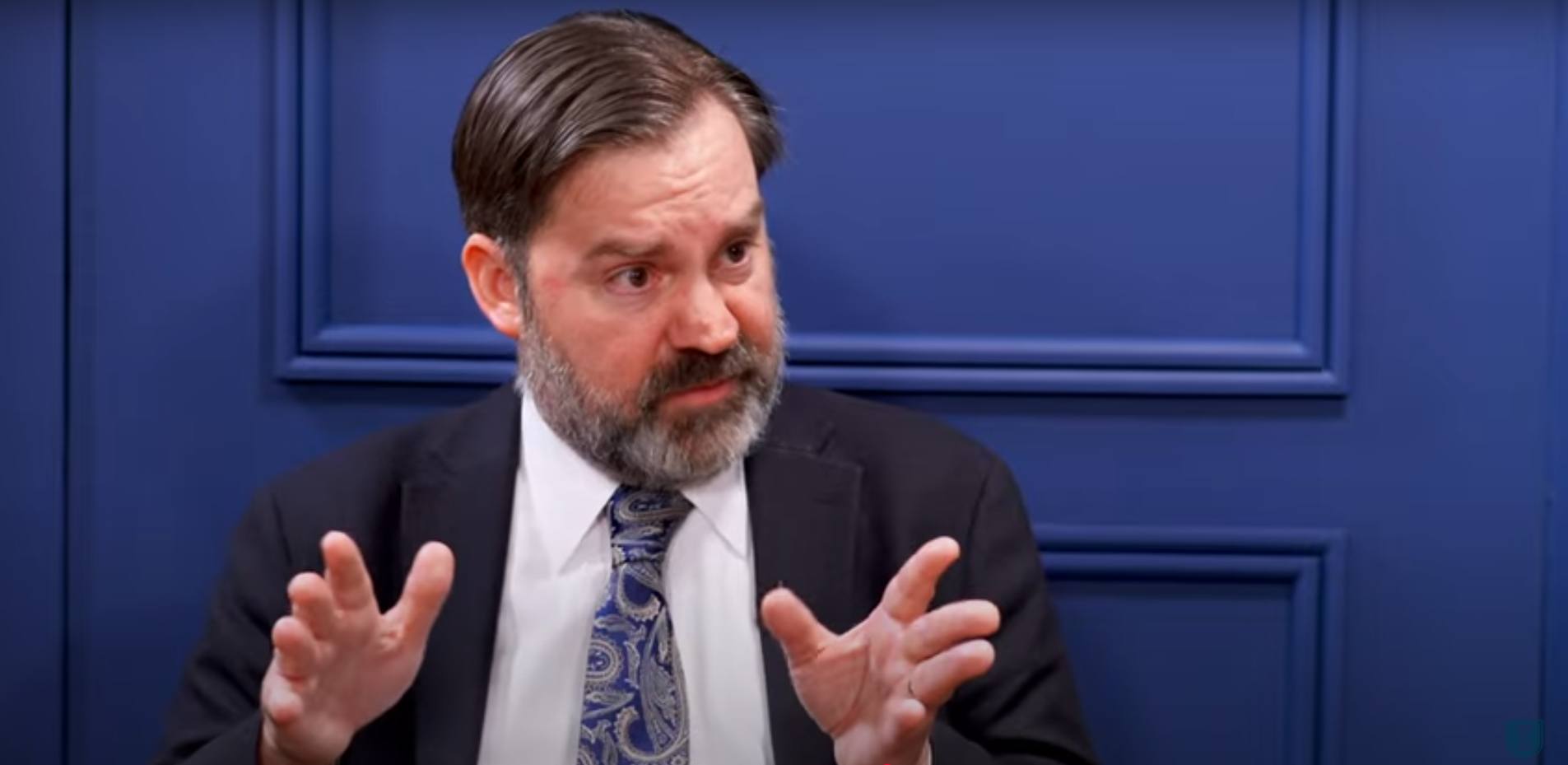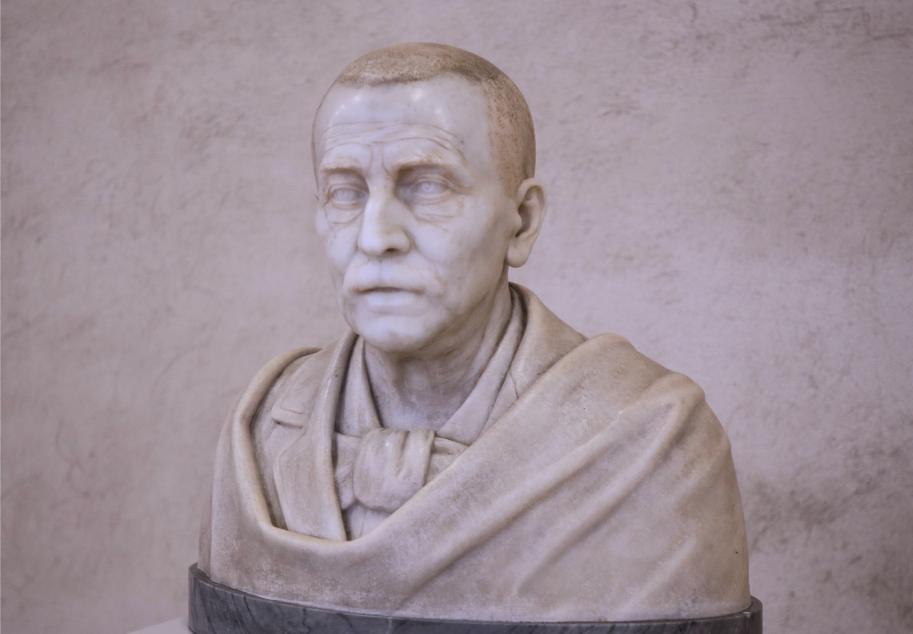In 1953, a thirty-four-year-old assistant professor at Michigan State, Russell Kirk, published The Conservative Mind. Kirk’s brilliant overview of the thought of noted Anglo-American conservatives over the past 175 years proved that a conservative tradition had existed in America since the founding. With this magisterial book, Kirk made conservatism intellectually respectable.
But the extraordinary success of The Conservative Mind overshadowed the publication of another conservative classic the same year: The Quest for Community, by the sociologist Robert Nisbet.
Man’s desire for community, Nisbet wrote, springs from some of the most powerful needs of human nature, including “a clear sense of cultural purpose, membership, status, and continuity.” Aristotle had recognized this fundamental desire more than two thousand years earlier when he wrote that man is by nature a social creature, “a political animal.”
Nisbet noted that the traditional sources of community included the family, the church, the neighborhood, and the civic association. Writing in the nineteenth century, Alexis de Tocqueville in Democracy in America had praised the amazing variety of associations he saw throughout the United States—commercial and industrial, religious and moral, general and particular, immense and small. Tocqueville wrote, “Everywhere that, at the head of a new undertaking, you see the government in France and a great lord in England, count on it that you will perceive an association in the United States.”
But by the mid-twentieth century, the powerful modern state had eroded these sources of community. Collectivism and centralization manifested themselves not only abroad—in Nazi Germany, Fascist Italy, and the Communist tyrannies of the Soviet Union and China—but also in the rapidly expanding federal government at home.
In fact, Nisbet observed, the human impulse toward community helped explain the rise of centralized regimes. As the traditional ties that bind fell away, people had to seek community somewhere. With nowhere else to turn, they looked to the government itself for meaning and a sense of community. The quest for community thus allowed statism—even totalitarianism—to flourish.
Nisbet’s core insight, then, is that to live in freedom, man must break the bonds between himself and the state by revitalizing the intermediary associations that, as Tocqueville saw, give life its texture and people a sense of purpose and membership.
The Quest for Community offers clear warnings about the dangers of a too-powerful central government. But just as important, it reveals the limits of radical individualism.
In an introduction to The Quest for Community, the New York Times columnist Ross Douthat sums up Nisbet’s crucial point: “To promote unfettered individualism is to risk destroying the very institutions that provide an effective brake on statism.”
Nisbet rejected the “atomistic propositions” of the laissez-faire philosophy that arose in the nineteenth century, “the age of individualism.” He noted that most individualists fail to recognize the close dependence of their thought on “the subtle, infinitely complex lines of habit, tradition, and social relationship.” To check the centralization of power, he argued, we need a “new laissez faire” that will hold fast “to the ends of autonomy and freedom of choice.” Nisbet’s laissez-faire has for its object not the abstract individual, whether economic or political, but rather the social group of association. It will:
- Create conditions “within which autonomous groups may prosper.”
- Recognize as basic social units the family, the local community, the trade union, the church, the college, the profession.
- Seek unity, not centralization; not power over great masses of men but rather “diversity of culture, plurality of association, and division of authority.”
The single greatest obstacle to creating these conditions, Nisbet wrote, is a “political clerisy” committed to the idea of “national community” and its utopian dreams.
We have not escaped this threat. If anything, the temptation to think of national politics as the highest form of community has grown stronger. As Douthat observes, Nisbet’s “Eisenhower-era analysis of the modern political predicament looks as prescient as it’s possible for any individual writer to be.”
Who was Robert Nisbet? How did he come to write such a prescient and probing work?
Nisbet was born in Los Angeles, California, in September 1913, but spent his childhood in the desert town of Maricopa, California, and then Macon, Georgia, his father’s birthplace. Although the family lived in Macon for only two years, Nisbet acquired a taste for the South. He later recalled of reading the Southern Agrarian manifesto I’ll Take My Stand, “The quickness with which I found myself agreeing with most of it was probably sufficient evidence that my road to political conservatism began with a considerable dosage of Southern Conservatism, the result of a couple of years in Macon.”
Nisbet loved the world of ideas and letters. In 1932, he enrolled at the University of California, Berkeley, and, except for three years he spent in the army during World War II, remained there for the next two decades—as an undergraduate, a graduate student, and then a faculty member. He returned to Berkeley after the war and for the first time read deeply the works of his “two greatest intellectual heroes,” Edmund Burke and Alexis de Tocqueville.
That immersive reading led him to write The Quest for Community, his first book, which the prestigious Oxford University Press released in 1953.
When the book appeared, conservatives praised its core message about the importance of revitalizing intermediate associations such as the family, the church, and the neighborhood. Russell Kirk called The Quest for Community a “seminal book.” Reviewing it for the Sewanee Review, he wrote that modern history is essentially the account of the decline of community and the corresponding rise of the powerful state. Kirk added: “Hostile toward every institution which acts as a check upon its absolute power, the State has been engaged, ever since the decline of the medieval order, in stripping away one by one the functions and prerogatives of those ancient institutions which were the guardians of true community—aristocracy, church, guild, family, and local association.” Kirk commended Nisbet for outlining how to counter the authority of the state through community. In turn, Nisbet praised Kirk for accomplishing with The Conservative Mind what he thought could not be done, “breaking through the [liberal] barrier against conservative books.”
Later, in the 1960s, The Quest for Community even influenced some New Left writers, including C. Wright Mills, who applauded Nisbet’s critique of centralized state power. But as Douthat points out, left-wing hostility to nearly every form of cultural conservatism sharply limited their enthusiasm for Nisbetian community. Most American liberals embraced the idea of a “national community.” Douthat writes: “The left-wing quest for community never escaped the gravitational pull of state power. The most important community was always the national community,” a position Nisbet firmly rejected.
Support for Nisbet’s middle way has sometimes come from unexpected quarters. When the classical liberal and Nobel laureate F. A. Hayek lectured at the Heritage Foundation in 1983, he said that the enormous framework of human cooperation rests on private property, the idea of honesty, and the family, omitting the individual. Traditional morality, Hayek insisted, “is vital to human survival.”
Soon after the release of The Quest for Community, Nisbet became dean of a new liberal arts college at the University of California at Riverside. He spent the next ten years in administration, but he returned to both teaching and writing.
Although his first book remains his most influential, Nisbet turned out a number of other important books, including Tradition and Revolt, The Sociological Tradition, and The Social Bond. His widely admired books became staples of college syllabi for years. As Brad Lowell Stone notes in his excellent biography, Nisbet explored the “erosion of intermediate communities” in “virtually every one of his eighteen books, and in the majority of his numerous articles.”
After forty years in the University of California system, Nisbet took a position at the University of Arizona in the history and sociology departments but found the intellectual atmosphere disappointing. He accepted the Albert Schweitzer Chair of the Humanities at Columbia University and joined the rich intellectual life of New York City, becoming friends with the noted historian Jacques Barzun as well as the neoconservatives Irving Kristol and Norman Podhoretz.
In 1978, at age sixty-five, he retired from teaching and moved to Washington, D.C., to become a fellow at the American Enterprise Institute. Over the next decade he wrote several books, including History of the Idea of Progress, Conservatism: Dream and Reality, and The Present Age: Progress and Anarchy in Modern America. He received various honors and awards, including the Award of Merit from the Republic of Italy and the 1988 Jefferson Lectureship, the nation’s most important recognition of intellectual achievement in the humanities. Other luminaries who have delivered the Jefferson Lectures include the critic Lionel Trilling, novelists Saul Bellow and Walker Percy, poet Wendell Berry, and historians Barbara Tuchman, Forrest McDonald, Robert Conquest, and Donald Kagan.
In his Jefferson Lecture, Nisbet praised the New Conservatism for following Tocqueville and Edmund Burke in “espousing decrease in centralization, pluralism over monism in government, the free market in basic economic production and distribution, intermediate social groups like family and local community and voluntary associations.” He had little praise for liberalism, which remained enthralled by the idea of the national state as “the only possible community in the late twentieth century.”
In his autobiography, Nisbet revealed a sly wit when he said he hoped he would die at his typewriter “and those close to me will call a taxidermist instead of a funeral undertaker . . . my mummified body will be suitably dressed and placed in proper position before the typewriter, available for display like the mummified remains of Jeremy Bentham in his room at the University of London.” He added that certain faculty members at Berkeley “would prefer me back in that condition in my native grounds than alive and writing.”
Nisbet died in September 1996, three weeks before his eighty-third birthday. His legacy endures. As Brad Lowell Stone writes, “Nisbet is recognized by his admirers and detractors alike as one of the most original and influential American social theorists of his generation.” He is beyond question, Stone says, the most important conservative sociologist of the twentieth century. From his first book to his last, Robert Nisbet declared that “it is the family, not the individual, that is the real molecule of society, the key link of the social chain of being.”
Convincing proof of Nisbet’s unique contribution to American conservatism can be found in the longevity of The Quest for Community, never out of print since 1953 and often cited; in his recognition as a leading intellectual with the invitation to deliver the prestigious Jefferson Lecture; in the praise paid him by conservatives from Russell Kirk to Ross Douthat; and in books that guide the reader along the rocky paths of sociology.
Nisbet does not receive the respect he warrants either from intellectuals of the liberal-progressive persuasion or even from members of the right. The conservative movement would be a far weaker intellectual force without Nisbet’s insights into the role of community, a cornerstone of the good society.















